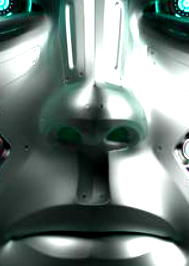'eNose' aimed at lung issues
 Experts are working on an electronic nose that can analyse ‘breathprints’ to spot health conditions.
Experts are working on an electronic nose that can analyse ‘breathprints’ to spot health conditions.
The electronic nose developed at the Erasmus University Medical Center in The Netherlands is capable of detecting with 86 per cent accuracy when a lung transplant is beginning to fail, according to research.
The technology could enable doctors to spot at an early stage when a lung transplant is failing, known as chronic allograft dysfunction (CLAD), so that they could provide treatments to prevent it getting worse.
“About 50 per cent of lung transplant patients are diagnosed with chronic allograft dysfunction or chronic rejection within five years of the transplant. Chronic rejection remains the most important cause of death after lung transplantation and, at the moment, there is no treatment available to reverse it,” says researcher Nynke Wijbenga.
“Once chronic rejection has been confirmed, patients can on average survive for between one and five years. A re-transplantation could be a last resort for specific patients with advanced chronic rejection. Therefore, it is of utmost importance to assess if we can predict or diagnose lung transplant dysfunction at an early stage, possibly enabling more successful early treatment.”
At present, it can take several months to diagnose CLAD.
Doctors test lung function at each visit and measure it against the best peak lung function achieved after the transplant. If it drops to 80 per cent or lower, then they investigate further to exclude causes that might respond to treatment, such as lung infection that could be treated with antibiotics.
Chronic rejection can only be confirmed after these investigations and if the decline in lung function persists for three months.
The ‘eNose’ is a small device that contains sensors to detect chemicals called volatile organic compounds (VOCs), which are present in about one per cent of our exhaled breath and can vary depending on metabolic processes that occur in the whole body or in parts of it, such as the lungs.
When patients breathe out into the eNose, the sensors not only detect the pattern of VOCs in the breath, but also correct the results to take account of the ambient air that has been inhaled.
The results are analysed using machine learning algorithms and the “breathprint” can be used to identify several lung diseases.
The researchers say more research needs to be carried out before the eNose can be used for formal clinical purposes.
More details are accessible here.








 Print
Print